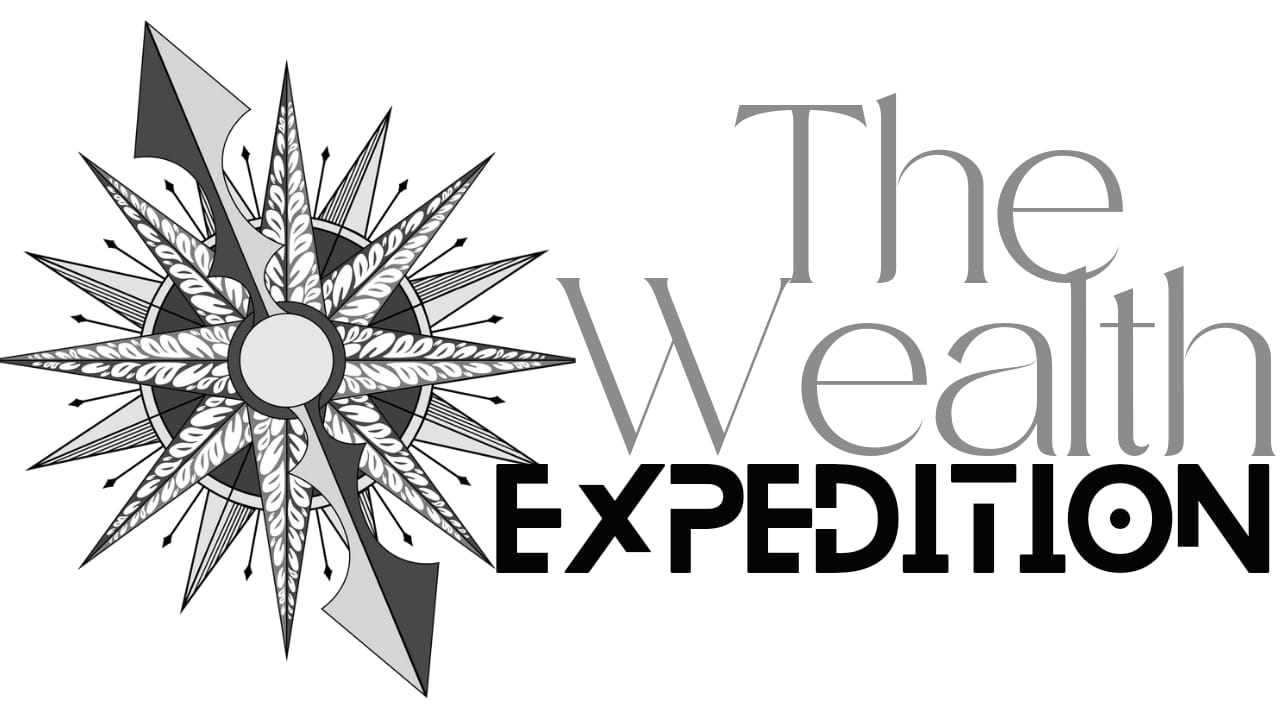- The Wealth Expedition
- Posts
- Easter Reflections: Jesus Teaches on Risk and Return
Easter Reflections: Jesus Teaches on Risk and Return
Learn investing principles from the one who sacrificed material wealth for the purpose of transforming heaven and earth.

Good morning trailblazers!
During this Easter weekend, I’m reminded of the one who taught that “one's life does not consist in the abundance of his possessions” (Luke 12:15). He walked the walk by embracing the nomadic lifestyle, doing good and teaching wisdom to all he encountered, and eventually giving up his earthly life to fulfill his destiny. Christ may not have accumulated monetary wealth, but he certainly lived a life radiating with purpose.
And purpose may indeed be the greatest wealth of them all.
When it comes to investing, we can all learn a lesson from his regular use of the seed and harvest metaphor…something which he embodied in his own voluntary death, and life again.
Happy Easter everyone!
Today’s newsletter covers:
What Happened This Week
Easter Reflections: Jesus Teaches on Risk and Return
Investing in Influence
Here’s How I Can Help
I’ve slashed the prices for both main courses: Budgeting and Investing. If these topics interest you, be sure to check one or both out!
Watch this week’s YouTube episode here.
First time reading? Subscribe for weekly content here.

NEWS
What Happened This Week
The Producer Price Index (PPI) surprisingly showed costs falling -0.4% in March, led by the decline in food and energy prices. Goods and services both declined in price. Estimates had been for a 0.2% increase.
Many electronic goods, including smartphones and computers, were temporarily exempted from reciprocal tariffs, which dramatically lowers the effective tariff on Chinese imports in total.
Real US economic growth (GDP) is still projected to be positive in the US, with the Bank of America projecting ~1% and the Federal Reserve estimating 1.7%.
While forecasts for global growth have been reduced, the chances of a recession still appear unlikely according to the International Monetary Fund (IMF).
The S&P 500 continues to show at least a short-term downtrend, with the 50-day moving average below the 200-day moving average and the monthly Relative Strength Index (RSI) likely to drop below 50 next month.
How I See It
A big key to markets resuming the bull market comes down to the ability for the Trump Administration, along with the Federal Reserve, to manage expectations.
As I’ve said previously, the impact of tariffs on inflation is likely overstated and over feared.
Certain goods would go up in price (perhaps 12%-14% of the goods we purchase as consumers). But less money to spend on other goods would likely mean a fall in demand, leading to prices in other areas slowing or even coming down.
Now that’s not great for the economy, because companies have to make a profit. Smaller profit margins mean greater need to restructure, which often leads to layoffs. And that means potential recession.
But let’s assume the effective tariff rate is around 20% on goods imported to the US. If we import around 12% of our goods and services, then simple math (and this definitely IS oversimplified for illustration) says 12% x 20% = 2.4% potential increase in costs to a consumer’s total spending.
But that’s not likely to happen, because tariffs spark change: in supply chains, in automation and structure of an organization, in willingness to reduce profit margins to compete, in willingness to negotiate for lower tariffs, etc.
In March, the Federal Reserve estimated a 2.7% increase in 2025 for the Personal Consumption Expenditure (PCE), a measure of inflation. That estimate was already accounting for the tariffs on our major trading partners. Maybe the new tariffs announced in April change that number. Let’s say it brings it up to 3.4%.
For someone whose monthly expenses are $5,000, this means they will have to come up with an extra $170 each month by the end of 2025. Of course, this is a speculative estimate.
But let’s also consider what the end game is meant to be here. A huge reason for the tariffs across the board is in order to dramatically lower, or even eliminate, the personal income tax.
A single individual earning $60,000/year, assuming a standard deduction, might pay something like $5,000 in federal taxes for 2025.
If taxes could be cut even $2,000 for someone like this, it potentially puts the money back in the individual’s pocket which pays for the increase in prices.
Now in reality, things rarely turn out this straightforward. Companies adjust prices based on demand, salaries might adjust either way for the change in income tax structure, etc. There are plenty of other ways this could end. The real question is whether there is a real chance at success in restructuring the economy in such a dramatic way that sustains itself over time.
For now, my prediction is that markets will likely continue to see more downside for at least another month, though it could carry on until July or August if big surprises to economic rules become the expected norm.
Downside potential from here? I would be surprised if there were more than 12%-13% drop from this point, unless expectations plummeted so badly that a recession was induced. Upside? I think over the next 12 months, it stands a chance at 15%-30%.
So in my opinion, unless someone is a short- to intermediate-term investor, weighting the odds in favor of growth means staying the course and waiting out the volatility for the days when market optimism returns.

“For where your treasure is, there your heart will be also.”
-Jesus
PARADIGM SHIFT
Easter Reflections: Jesus Teaches on Risk and Return
As we celebrate this Easter weekend, we remember a truly remarkable person from a remote village in Israel whose words have been repeated, studied and revered for more than two thousand years.
While Jesus wasn’t a man of business, money or other material pursuits, he possessed a deep revelation of the power of seedtime and harvest. Growing up in the small town of Nazareth, he made his early living through carpentry and (as some scholars have suggested) possible masonry.
From his largely agricultural setting, he illustrated his later teachings around two main word pictures: sowing and reaping, and home and building construction.
His grasp on sowing and reaping led him to teach a very powerful short story about investing.
The story, found in Matthew 25, recounts a rich man who goes on a long journey, leaving his money to three of his trusted servants for stewardship. Two of these servants use the money for productive purposes, earning him double what he gave them. But the one to whom he gave the least was afraid, afraid to fail, afraid to do something his master didn’t approve of, and decided to simply bury the money so that he could return it to the master upon his return.
The problem was that the master was not concerned about risking money. He wanted them to take risks in a positive direction. So when he returned, he praised and gave more to those who had risked to earn him a reward.
But the one that did nothing made excuses: “I was afraid,” he said. And the rich man called him “wicked” and “slothful.”
At least, he said, you could have invested the money with the bankers to gain interest! You couldn’t even do that! And so he took from the one who had nothing to show for the gift he was entrusted with, and he gave to the servants that had been productive and taken risks.
Do we often think of fear and slothfulness as being wicked traits? Jesus certainly seemed to see it that way.
If nothing else, fear and slothfulness (or might we say, even procrastination) not only costs us dearly in terms of what “might have been,” but it also robs the world around us of our own talents and positive influence that can exponentially echo without limit geographically and throughout time.


FINANCIAL TOOL
Investing in Influence
Anyone can invest in the stock market, diversify, and probably average something like 7%-10% over the decades.
If they’re highly skilled, or have a highly skilled wealth manager, maybe that number is 11%-15%.
But I think of investing as much more than the stock market.
The fact is, if you’re looking to eventually branch off into entrepreneurship, the foundational thing you can start doing now is to invest in influence.
That means building an audience that cares about what you have to say.
Maybe you’re interested in starting up your own restaurant, perhaps starting with a food truck. Maybe you’re not ready to quit your day job for this yet, but what you can do today is begin building an audience who’s eager and ready to buy.
Getting that early momentum means:
Faster accumulation of reviews and other feedback
More recommendations to friends
Time to make adjustments and work through the kinks while enjoying the income
If the idea is a good one, and you can adjust and hone your strengths, that early momentum should hold.
But audience building takes time to do organically. That’s the beautiful thing about starting early, before you quit your day job.
Instead of investing $1,000/month in the stock market, what if someone invested $500 in the stock market and $500 in building an audience? Over 12 months, that’s $6k invested in building early momentum for the business.
Could you have 3,000+ people interested in your business before it ever gets started? You certainly could if you made the investment.
Entrepreneurship, if successful, stands a far likelier chance at outperforming what someone could earn on the stock market over the long-run.
Imagine someone spends $100,000 in the first year for the food truck, marketing, operating expenses, etc., and they earn:
Year 1: $30k
Year 2: $50k
Year 3: $80k
Year 4-20: $120k
Let’s also adjust years 4-20 for 2% annual estimated inflation and sell the business in year 21 for 35x monthly profit.
Here’s the approximate internal rate of return: 64%
Now maybe this is a bit optimistic. Not everyone is going to meet with such fast early success. But even if the return were only half that — say 30% IRR — would that still be more exciting than what could be made in the stock market?
So here’s the question. Are you interested in averaging 7%-10% on the stock market with $100,000? Or are you interested in something closer to 64% return on investment?
Now this isn’t exactly apples to apples. The stock market requires no effort on your part to run the business. Starting your own business definitely would. But gaining that control allows you to take the next step in hiring others, delegating, and scaling.
It’s not easy. But it’s a radically different potential in terms of investment return. And it’s an adventure that can easily become worthwhile simply because it’s meaningful and purposeful, making the world a better place.

HERE’S HOW I CAN HELP
Launch Your Personal Wealth Expedition!
Ready to take control of your financial destiny?
Here are the two foundational courses which will set you on course to radically transform the way you live and work.
The price has recently been reduced! So be sure to take advantage of the opportunity while it lasts.

Budget, Build, Bridge: The Roadmap to Financial Independence
This course will lead you step-by-step toward developing your escape plan into a life of comprehensive wealth: time, flexibility, purpose and money.
Each lesson builds upon the last, covering these main topics:
Master high-impact budgeting techniques to create a surplus today.
Develop a plan to become debt-free in record time.
Raise your salary this year.
Use tax strategy to fast-track your goals.
Bridge your way to entrepreneurship.

Advanced Investing for Financial Freedom
Whether you're new to investing or a seasoned expert, this course is designed to make anyone a master of what I believe to be the most important investing concepts.
Here's what you'll learn in this course.
The foundational concepts for analyzing the risk and performance of mutual funds and ETFs.
How your goals affect the allocation of your investment portfolio.
How to fine tune the risk factors in your portfolio to weight the odds of success in your favor.
How to identify stages of the market cycle and build your portfolio around it.
How, when and why to hedge against downside risk.
How this all ties together as one comprehensive wealth expedition from ground zero to financial independence.
With investing, it often takes an understanding of just a handful of concepts to make all the difference in your ability to make tremendous wealth over time.
My goal with this course is to offer you what I see as the most important concepts to successful investing, setting you on course to achieve your dream life well in advance of retirement age using simple but powerful habits of finance.

How did you like today's newsletter?I'm always looking for ways to offer greater value to fellow explorers. Your feedback helps set the direction for future content! |

I’d love to hear from you. Let me know what you’d like to see in upcoming newsletters, articles, or a digital course at Contact Us - The Wealth Expedition.